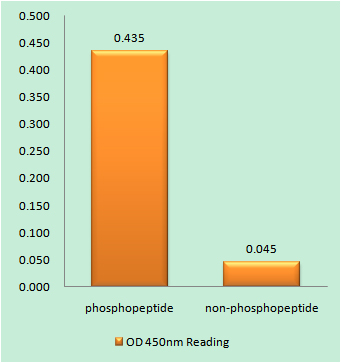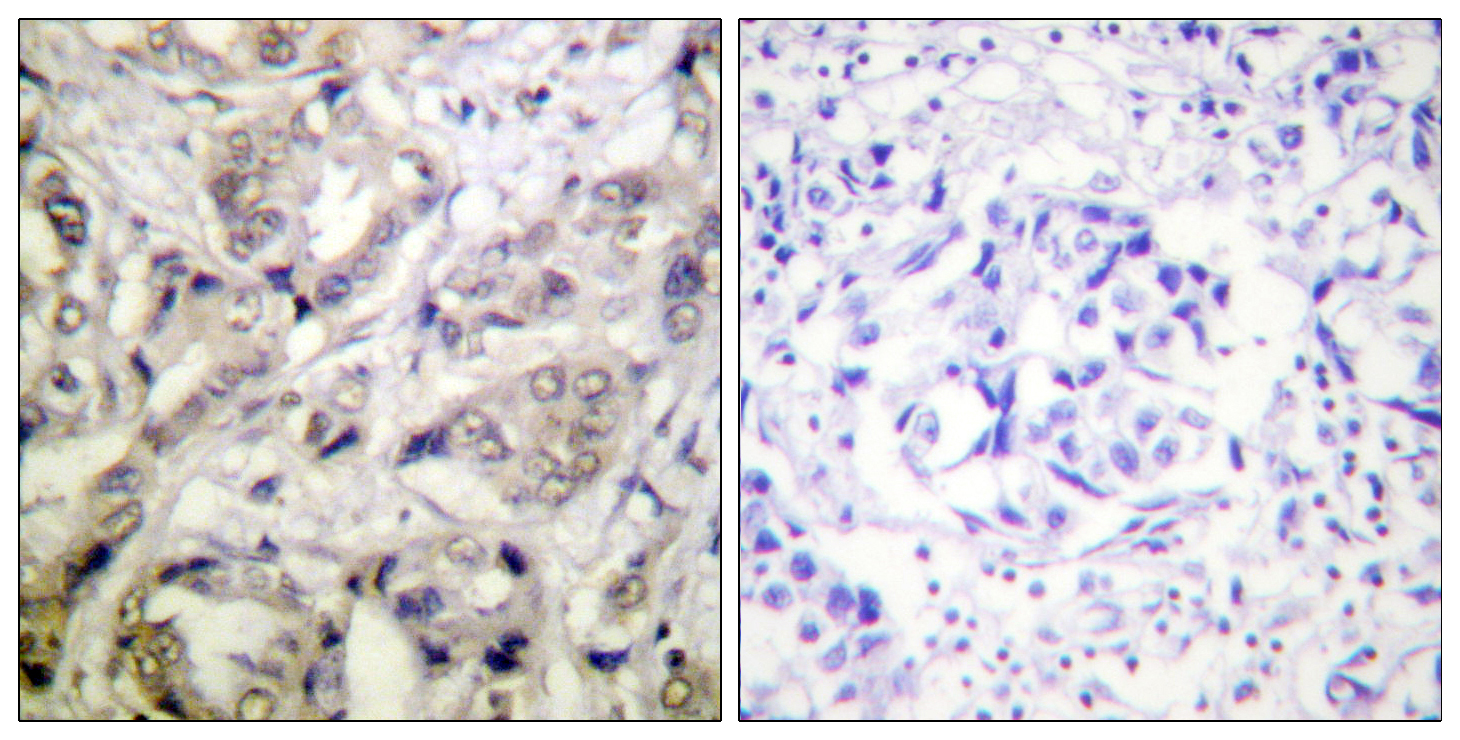Phospho CaMK1-α (T177) Cell-Based Colorimetric ELISA Kit
- Catalog No.:KA1429C
- Applications:ELISA
- Reactivity:Human;Mouse;Rat
- Gene Name:
- CAMK1
- Human Gene Id:
- 8536
- Human Swiss Prot No:
- Q14012
- Mouse Swiss Prot No:
- Q91YS8
- Rat Swiss Prot No:
- Q63450
- Storage Stability:
- 2-8°C/6 months
- Other Name:
- Calcium/calmodulin-dependent protein kinase type 1 (EC 2.7.11.17) (CaM kinase I) (CaM-KI) (CaM kinase I alpha) (CaMKI-alpha)
- Detection Method:
- Colorimetric
- Background:
- catalytic activity:ATP + a protein = ADP + a phosphoprotein.,domain:The autoinhibitory domain overlaps with the calmodulin binding region and interacts in the inactive folded state with the catalytic domain as a pseudosubstrate.,enzyme regulation:Activated by Ca(2+)/calmodulin. Binding of calmodulin results in a conformational change that generates functional binding sites for both, substrate and ATP, and thus releaves intrasteric autoinhibition. Must be phosphorylated to be maximally active. Phosphorylated by CAMKK1 or CAMKK2.,function:Calcium/calmodulin-dependent protein kinase belonging to a proposed calcium-triggered signaling cascade involved in a number of cellular processes like transcriptional regulation, hormone production, translational regulation, regulation of actin filament organization and neurite outgrowth. Involved in calcium-dependent activation of the ERK pathway (By similarity). Recognizes the substrate consensus sequence [MVLIF]-x-R-x(2)-[ST]-x(3)-[MVLIF]. Phosphorylates EIF4G3/eIF4GII. In vitro phosphorylates CREB1, ATF1, CTFR, MYL9, SYN1/synapsin I and SYNII/synapsin II.,similarity:Belongs to the protein kinase superfamily.,similarity:Belongs to the protein kinase superfamily. CAMK Ser/Thr protein kinase family. CaMK subfamily.,similarity:Contains 1 protein kinase domain.,subcellular location:Predominantly cytoplasmic.,subunit:Monomer. Interacts with XPO1.,tissue specificity:Ubiquitous.,
- Function:
- protein amino acid phosphorylation, phosphorus metabolic process, phosphate metabolic process, nucleocytoplasmic transport, phosphorylation, positive regulation of cell differentiation, intracellular transport, positive regulation of developmental process, regulation of muscle cell differentiation, positive regulation of muscle cell differentiation,nuclear transport,
- Subcellular Location:
- Cytoplasm . Nucleus . Predominantly cytoplasmic. .
- Expression:
- Widely expressed. Expressed in cells of the zona glomerulosa of the adrenal cortex.
- June 19-2018
- WESTERN IMMUNOBLOTTING PROTOCOL
- June 19-2018
- IMMUNOHISTOCHEMISTRY-PARAFFIN PROTOCOL
- June 19-2018
- IMMUNOFLUORESCENCE PROTOCOL
- September 08-2020
- FLOW-CYTOMEYRT-PROTOCOL
- May 20-2022
- Cell-Based ELISA│解您多样本WB检测之困扰
- July 13-2018
- CELL-BASED-ELISA-PROTOCOL-FOR-ACETYL-PROTEIN
- July 13-2018
- CELL-BASED-ELISA-PROTOCOL-FOR-PHOSPHO-PROTEIN
- July 13-2018
- Antibody-FAQs


